The Poldi Pezzoli Museum in Milan is launching an extraordinary project: the first “live” conservation intervention on Piero del Pollaiolo’s Portrait of a Young Woman, an icon of 15th-century Italy. Starting today, visitors to the museum will have the opportunity to observe the work of restorers up close and understand the importance of diagnostic imaging applied to works of art. The restoration will be carried out by Carlotta Beccaria and Roberto Buda.
The painting, dating from around 1470, was acquired by Gian Giacomo Poldi Pezzoli in the 1870s and quickly became one of the most beloved pieces in the collection. This conservation intervention is the first since 1951 and focuses on both the wooden panel and the pictorial layers, which have deteriorated with time and a yellowed surface patina. To prepare for the restoration, a complex diagnostic campaign was conducted, supported by the Bracco Foundation and overseen by a multidisciplinary scientific team from the Universities of Milan and the La Venaria Reale Conservation and Restoration Center. The investigations made it possible to accurately assess the state of health of the panel and the pictorial surface, revealing criticalities invisible to the naked eye, such as the deformation of the wooden support and the tension threatening the stability of the pictorial layers.
In 1951, the insertion of dovetail crossbeams by restorer Mauro Pellicioli aimed to correct the natural curvature of the wood. However, this operation generated tension over time that now risks causing irreversible damage to the pictorial surface, visible in the cleft across the face of the young woman portrayed. The new intervention adopts modern techniques that are more respectful of the natural flexibility of the wood, avoiding compression and promoting long-term preservation.
Throughout the restoration process, the public will be able to follow the progress “live” at the Museum, delving into the work of the restorers and participating in thematic events. Meetings with experts, family workshops and educational tours for young people and fragile audiences will be organized to make the importance of conservation of artistic heritage accessible to all.
Thanks to the support of the Diözesanmuseum Freising in Munich, an institutional partner in this operation, the Poldi Pezzoli Museum thus continues its mission to promote international collaborations for the care and enhancement of its works.
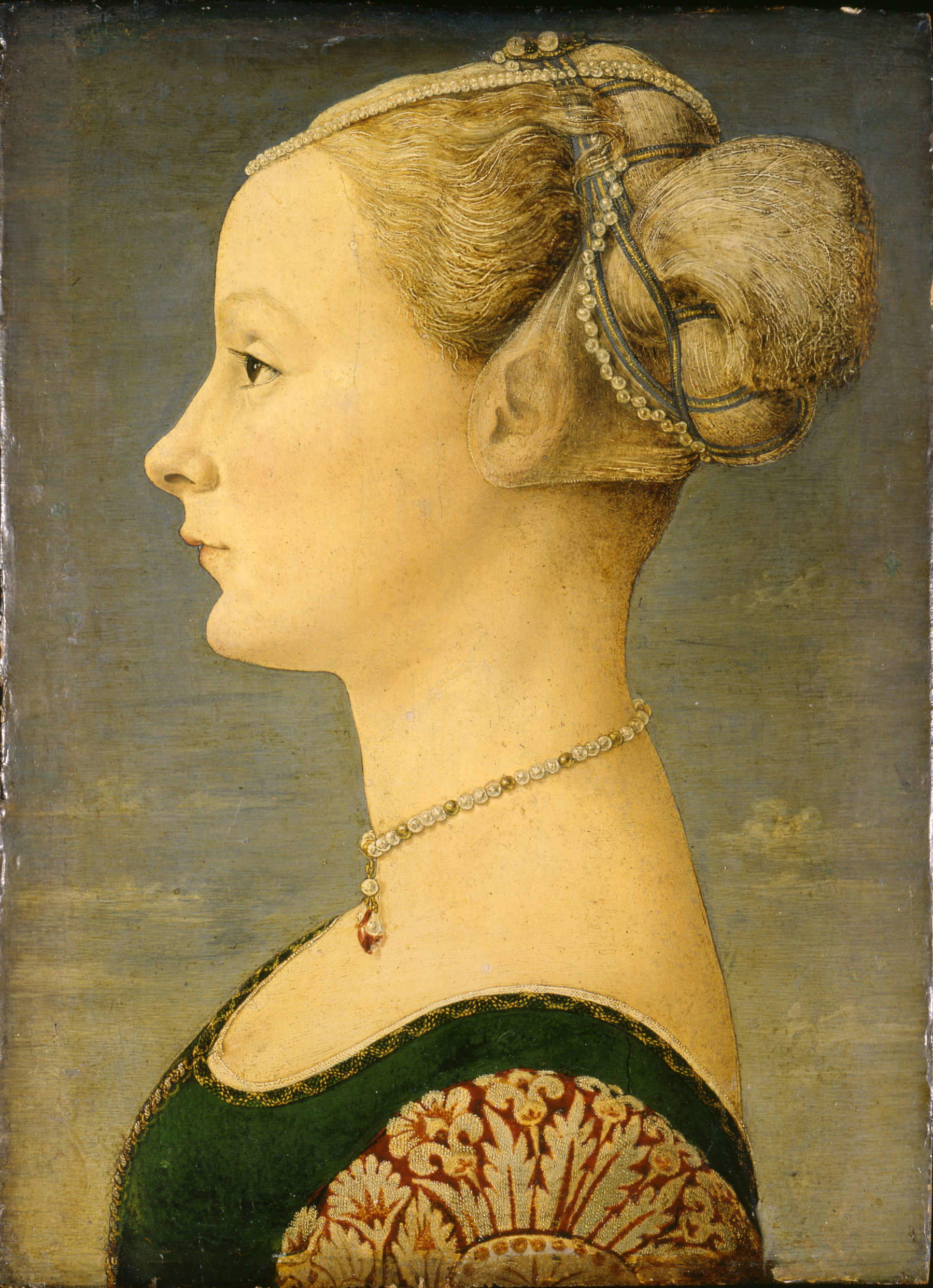
“A live conservation intervention offers the opportunity to make visitors aware of the operations underway, answer their curiosity and illustrate the phases ranging from preliminary diagnostics to the actual intervention, emphasizing the relationship between pictorial technique, that is, the physical consistency of the work, and its conservation,” says Alessandra Quarto, director of the museum. “And not only that: we want to highlight the importance of the multidisciplinary work initiated in June during the campaign of diagnostic investigations with a constant confrontation between museum curators, scientists and restorers in order to intervene in the most careful and conscious way on this masterpiece. A wonderful working experience that has enriched all of us during these months of analysis.”
“Art and science are a winning combination,” claims Diana Bracco, President of Bracco Foundation. “We have always believed in this, and in fact for years with our Foundation we have been making available for the analysis and restoration of Italy’s cultural heritage the Bracco Group’s expertise in diagnostic imaging, a field in which we are global leaders. It therefore seemed natural for us to become Scientific Partner of the first live restoration at the Poldi Pezzoli Museum in Milan. These physical and chemical technologies can reveal, for example, the description of the material composition of the paint pigments and the preparation layer, the existence or absence of preparatory drawing, and the extraction of characteristics of the artists’ technique and style. I personally witnessed the preliminary CT scan on Pollaiolo’s work carried out in our Italian Diagnostic Center and found the procedure very exciting: using a state-of-the-art diagnostic technique on a ’young woman’ of the 15th century produces an effect of great wonder, it almost seems like a time machine that allows two very distant points to meet. With this project everyone will have the opportunity to get excited about this authentic marriage of art and science.”
“Removing the current crossbeams and equipping the painting with new generation crossbeams that can accommodate, thanks to an elastic type of control, the natural movements of the wood will allow the board to relax,” explains Roberto Buda. “It is an intervention technique that has been developed and adopted for decades that has given good results for the purposes of safeguarding the painting surface because it allows a non-binding control of deformations, allowing the planking to find an optimal balance with the dimensional variations due to the continuous equilibrium with the thermo-hygrometric values of the exhibition environment, inevitably subject to seasonal changes”-argues Roberto Buda, an expert in support interventions.
“From the reading of the surface of the work and the analysis of the data collected during the scientific investigations, a polychromy emerges on the whole adhered to the preparatory layers and the wooden support even if with widespread signs of compression,” adds Carlotta Beccaria. “The original chromatic balance of the hues desired by the artist, however, appears strongly dampened by the yellowing of the layers of varnish, applied in significant thickness, with areas of rippling and small exfoliations. Not only the varnish but also the pictorial restorations done in the past are now visibly altered and interfering with the reading of the work. If left unaddressed, the past restorations and the aged layer of paint would continue to emphasize their alteration, further darkening and staining the surface. The restoration of the paint film will, therefore, restore better legibility and enjoyability of the work, restoring the color balance of the hues.”
“The Diözesanmuseum Freising Munich,” says director Christoph Kürzeder, “has been working, since its reopening in 2022 after eight years of restoration and modernization, collaborating with national and international Museums and Cultural Institutions in order to create exhibitions that are the result of studies and research to promote, through art and culture, those processes of growth, social development and individual awareness of which the Archdiocese of Munich and, in particular H.E. Cardinal Reinhard Marx, has been an active witness. The Diözesanmuseum is located 30 kilometers from Bavaria’s capital, Munich, in the former episcopal seat of Freising, and houses an important collection of ecclesiastical art from early Christianity to the present day. Since the reopening, four exhibitions have already been held, which have also been made possible thanks to the trust and support of lenders who, like the Poldi Pezzoli Museum, appreciate and share the great effort the Diözesanmuseum is making to spread culture, inclusion, and peace through the universal language of Art. Thanks to international relations and the intense diplomatic activity of the Swiss Lab for Culture Projects, the Diözesanmuseum has obtained exceptional loans of masterpieces sometimes never before exhibited in Germany, contributing in return to the restoration of various works and to cultural initiatives worthy of support that lenders have submitted to it, true to the principle that museums must work together for a ”true“ crossing of borders and beyond language or cultural barriers.”
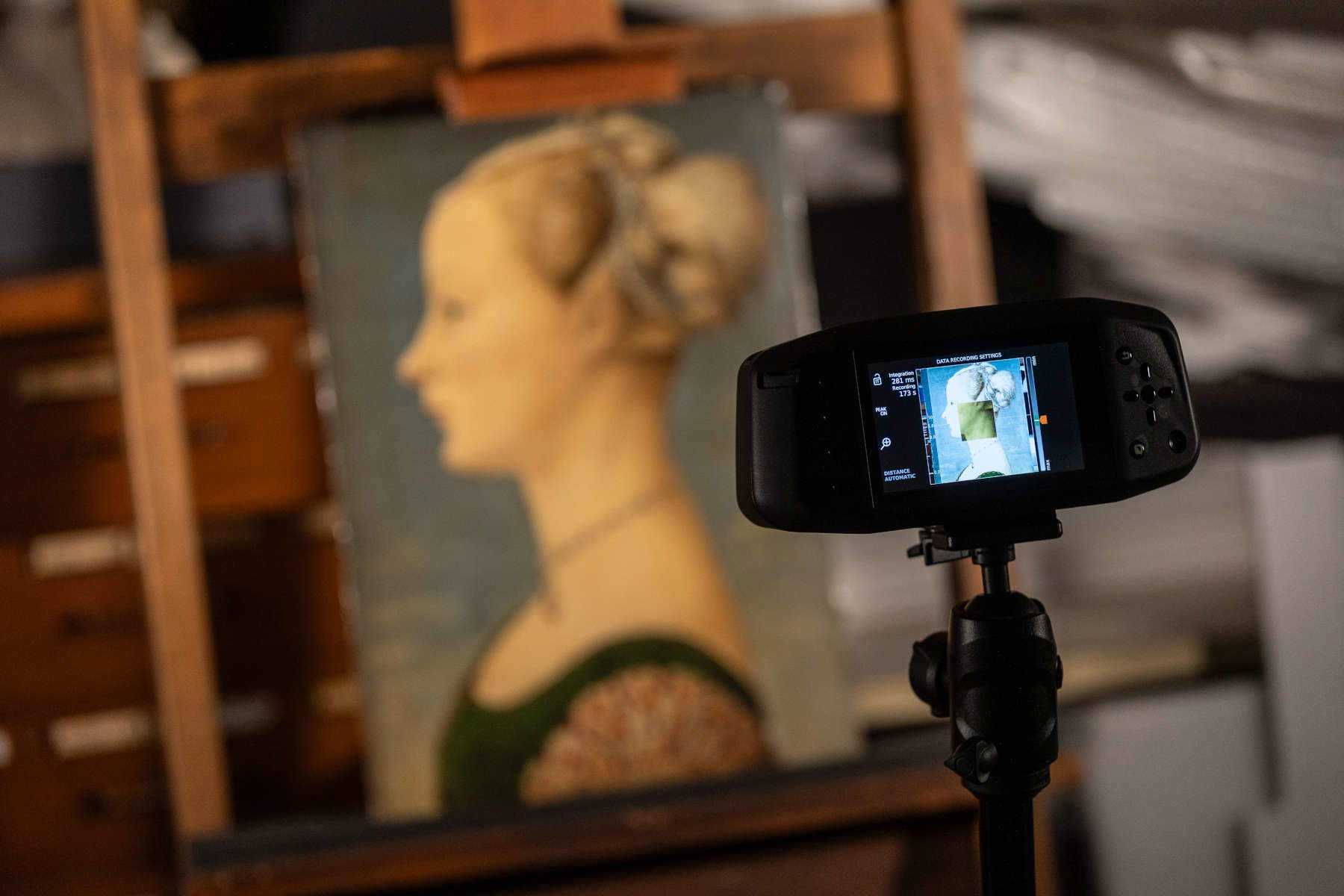
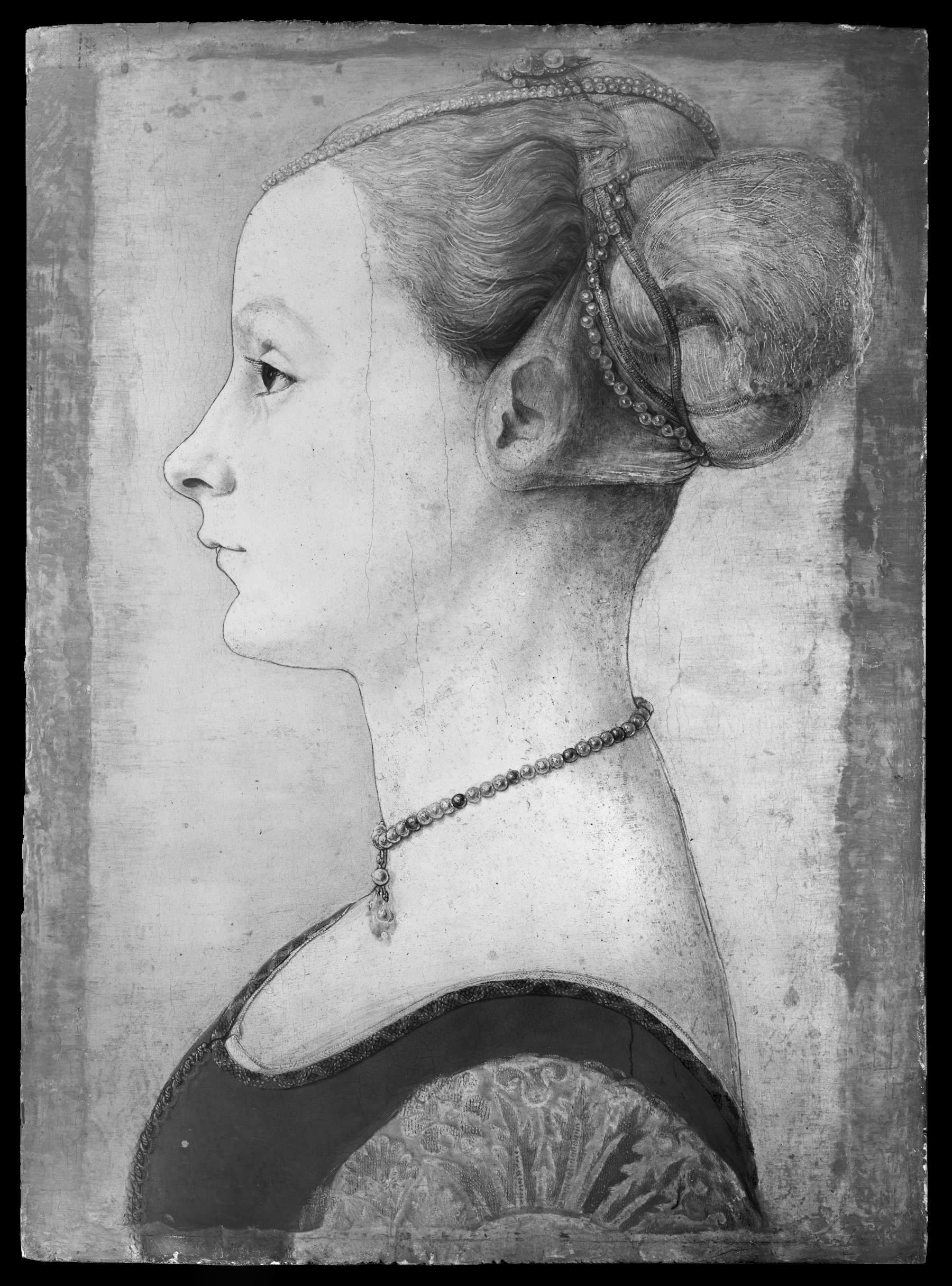
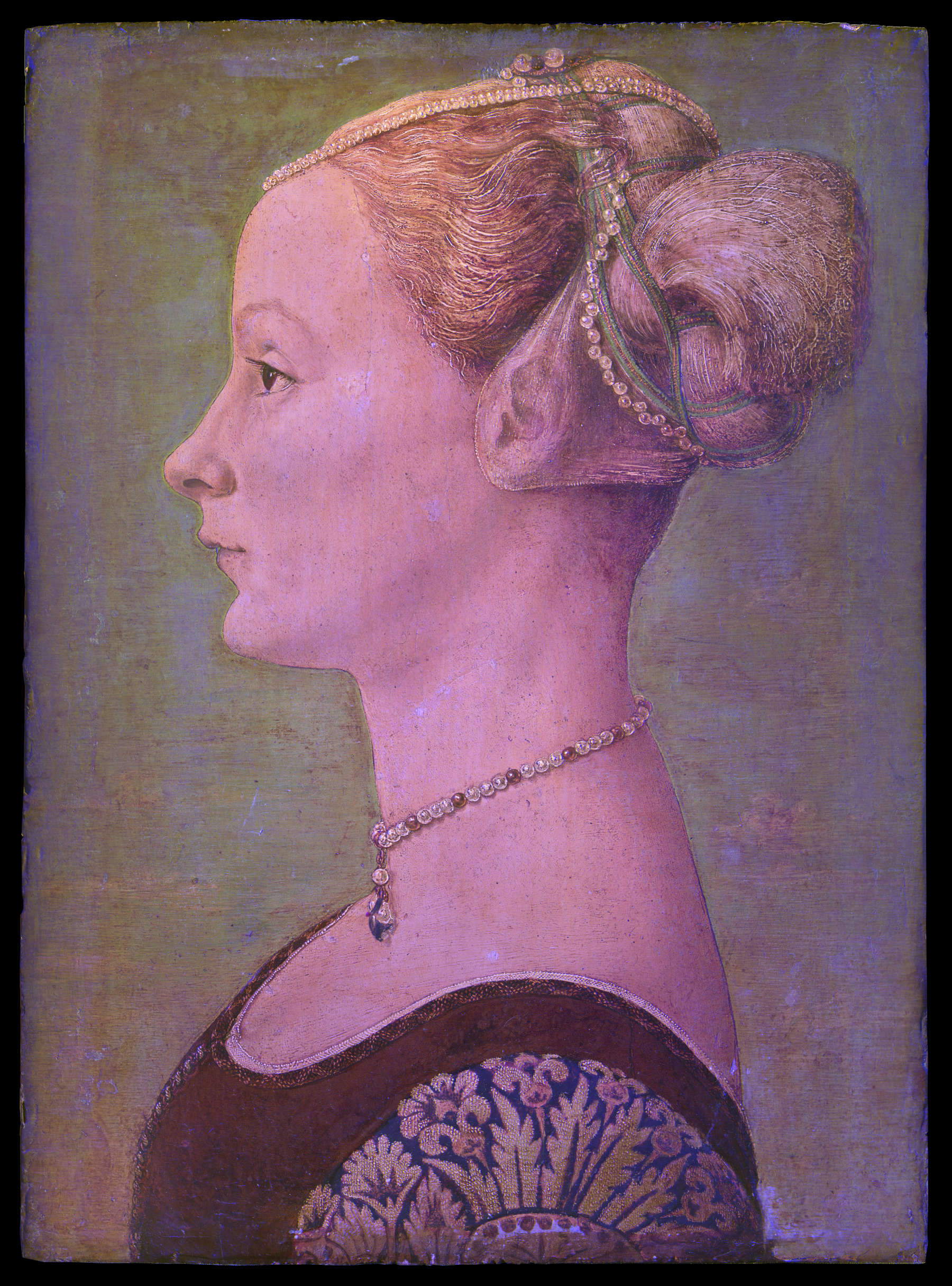
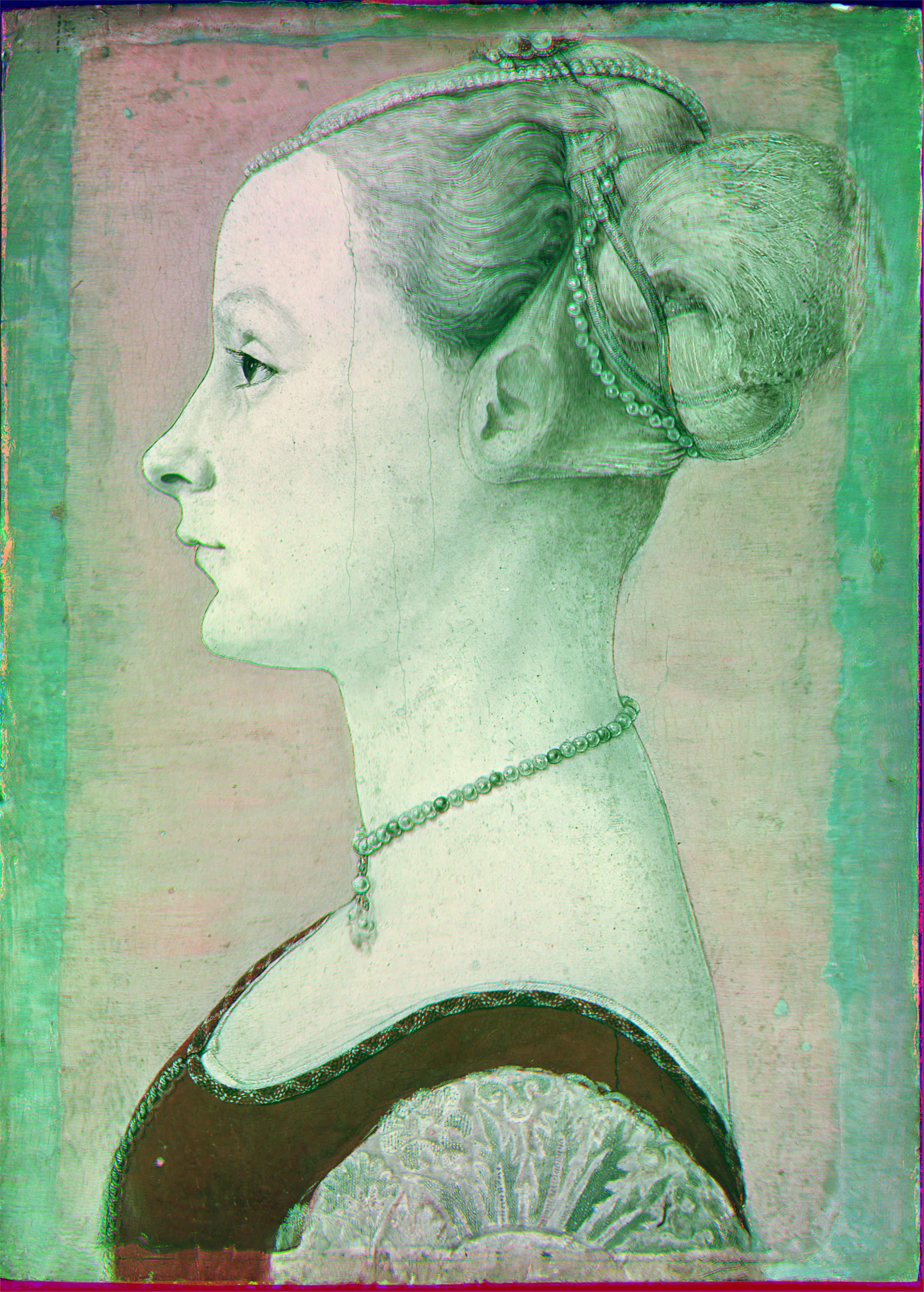
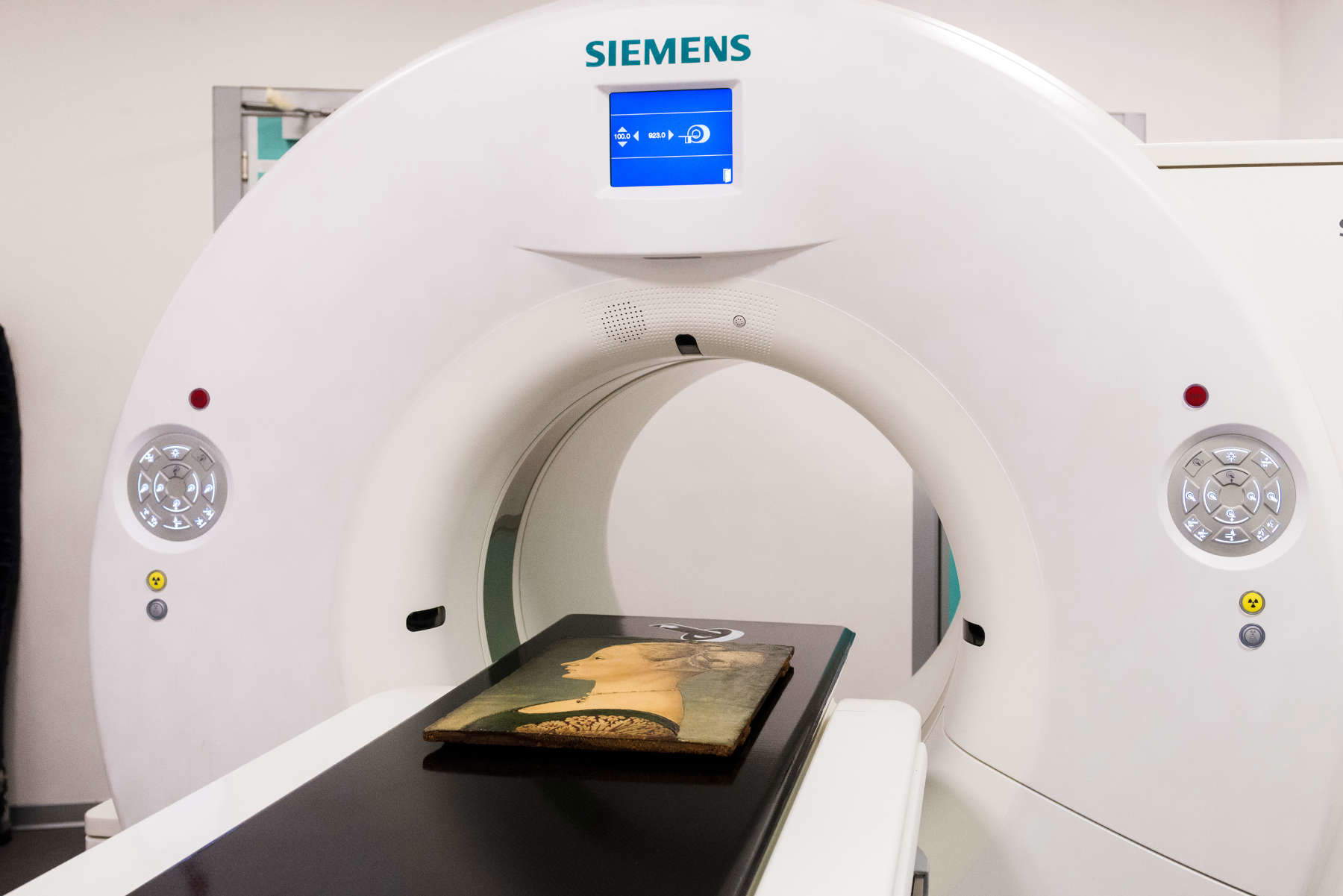
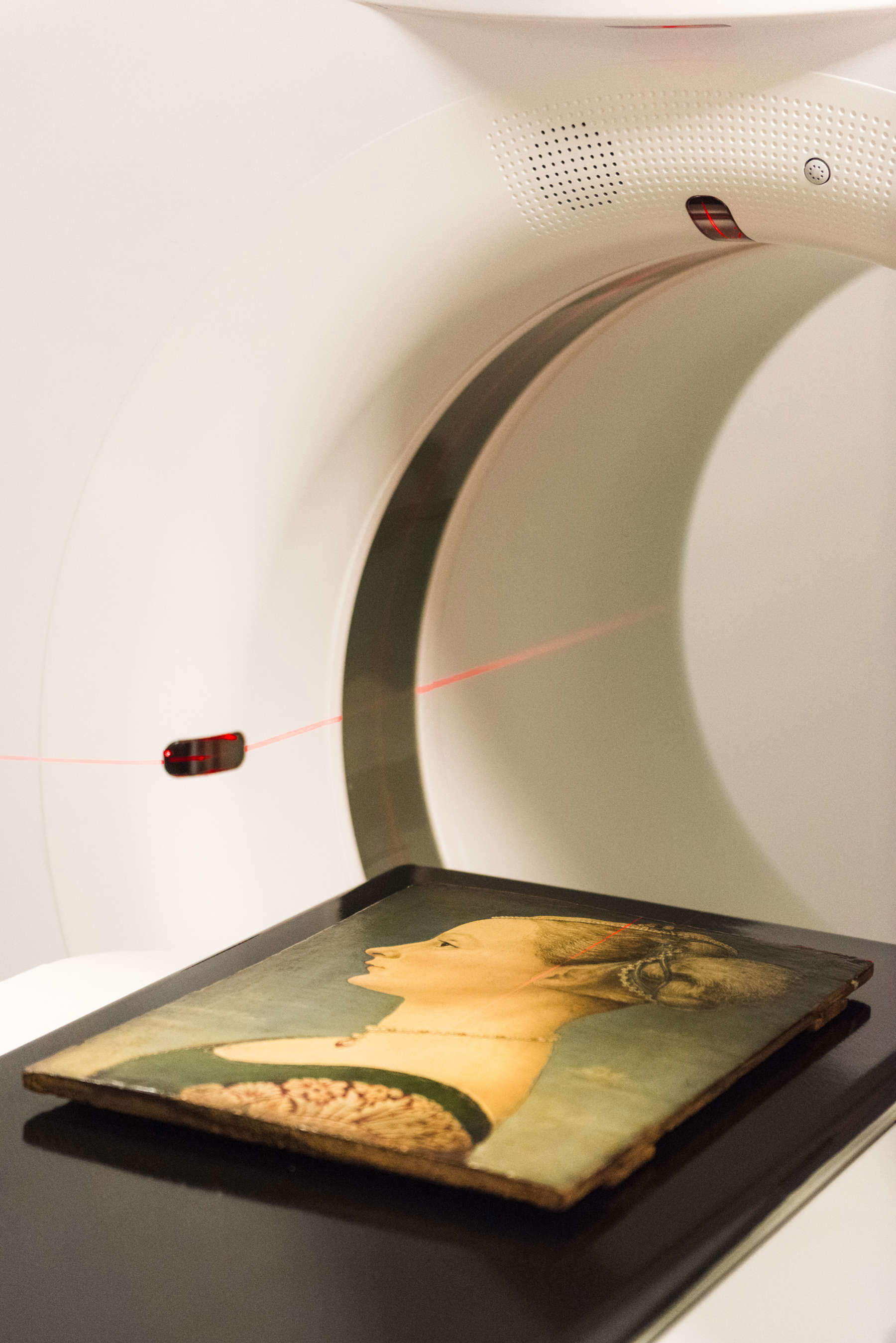
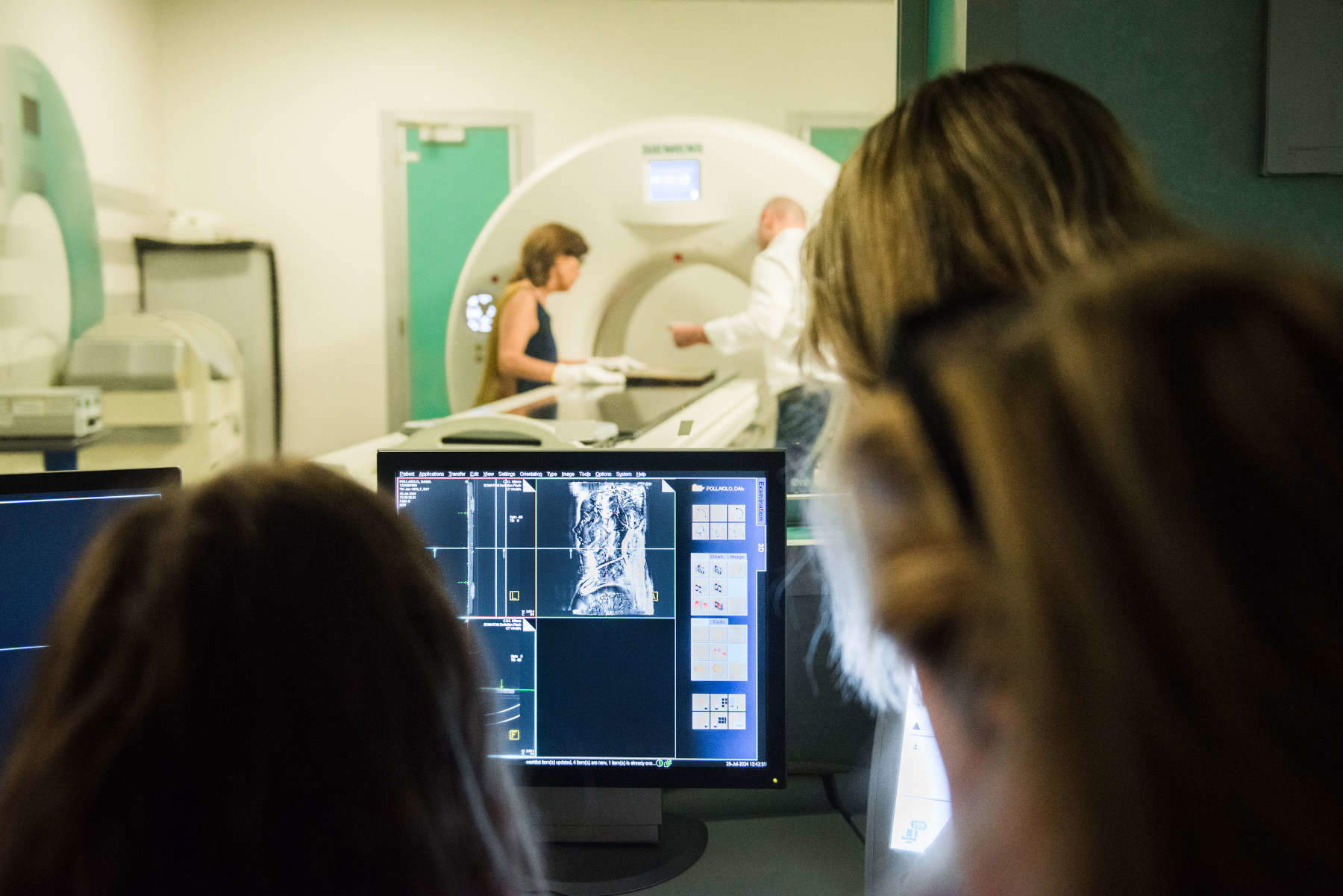
This famous painting depicts a young lady silhouetted against a blue sky furrowed by a few clouds. The intricate hairstyle enriched by the frenello, the string of pearls descending on the forehead, the necklace to which a pendant with a large ruby is attached, and the sumptuous velvet sleeve with floral decoration indicate the lady’s wealth and aristocratic origin.
The face, shown perfectly in profile, according to ancient portraiture, is marked by a thin black outline, which makes it stand out sharply. The profile pose is also chosen for reasons of decorum because it prevents the effigy’s gaze from intercepting that of the viewer.
The identity of the young woman is unknown, but it is likely that she was a Florentine lady who was married in the second half of the 15th century to Giovanni II da Barbiano, count of Cunio, with whose family the painting remained until 1814. The work may have been made in the run-up to the wedding, at the time the moment of highest public visibility for a young woman.
The painting, datable to about 1470, is the most famous of a series of female portraits, currently divided among several European and American museums, executed over a fifteen-year period by Piero del Pollaiolo. The younger brother of Antonio, a goldsmith painter and sculptor, Piero devoted himself exclusively to painting; contemporaries considered him one of Florence’s greatest painters, equal to Botticelli and Ghirlandaio. Typical of Pollaiolo is his painting technique, rendered with a dense, compact material that gives texture and thickness to the most minute details. The extraordinary attention to the values of light testifies to the influence of the innovations introduced by contemporary Flemish painters.
Gian Giacomo Poldi Pezzoli acquired the painting around 1870 as a work by Piero della Francesca while the attribution to Pollaiolo began to emerge only from the early 20th century. Since its entry into the collection, the painting has undergone two restorations: the first carried out by Luigi Cavenaghi within 1881, consisting of the pictorial integration of some gaps and, the second, by Mauro Pelliccioli in 1951. To the latter is attributed, among other things, the insertion of two crosspieces on the back of the panel in order to force it to flatness, then considered the aesthetically best form. The yellowing of the varnishes applied in these restorations and the cracks formed on the face due to the compression of the crossbars led to the current conservation intervention being undertaken.
 |
| Live restoration for Piero del Pollaiolo's masterpiece at the Poldi Pezzoli Museum |
Warning: the translation into English of the original Italian article was created using automatic tools. We undertake to review all articles, but we do not guarantee the total absence of inaccuracies in the translation due to the program. You can find the original by clicking on the ITA button. If you find any mistake,please contact us.